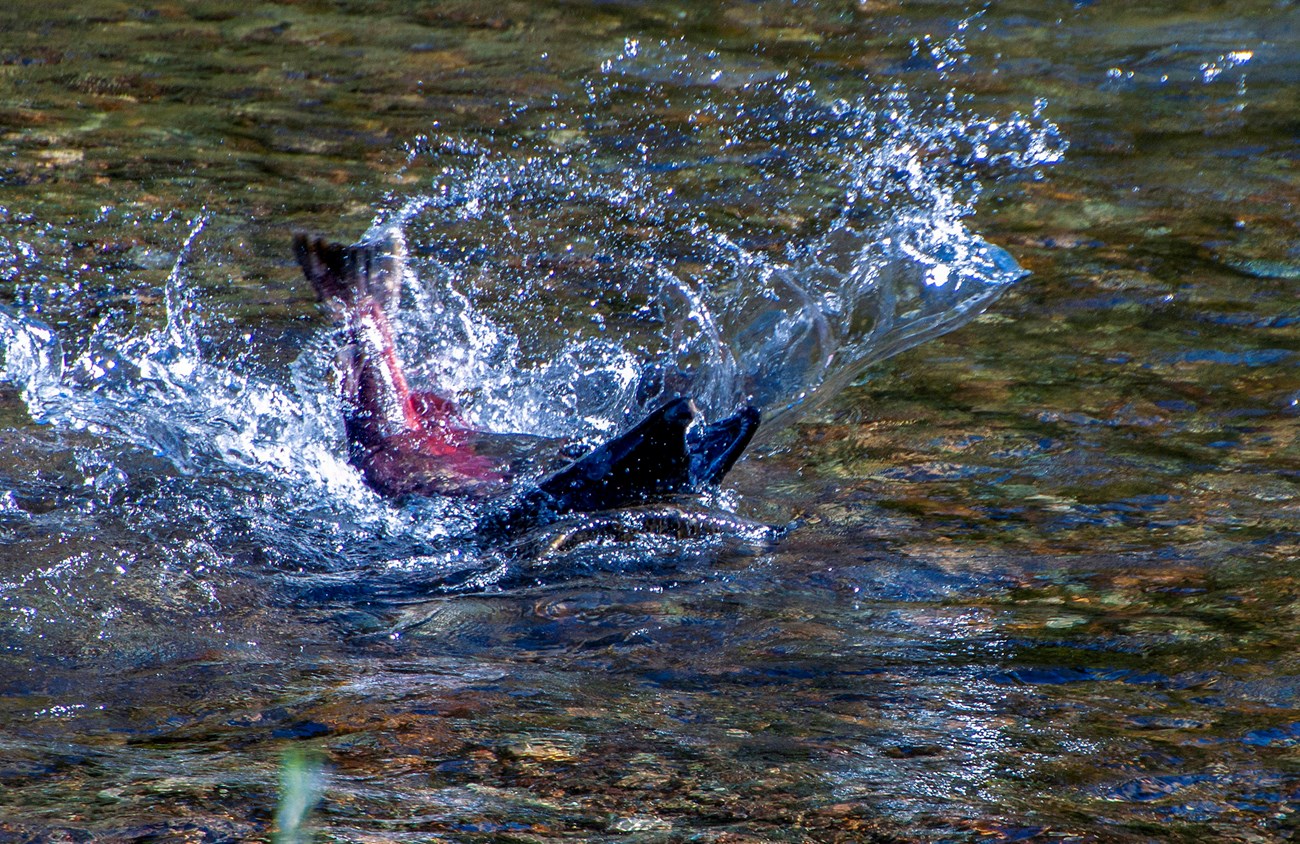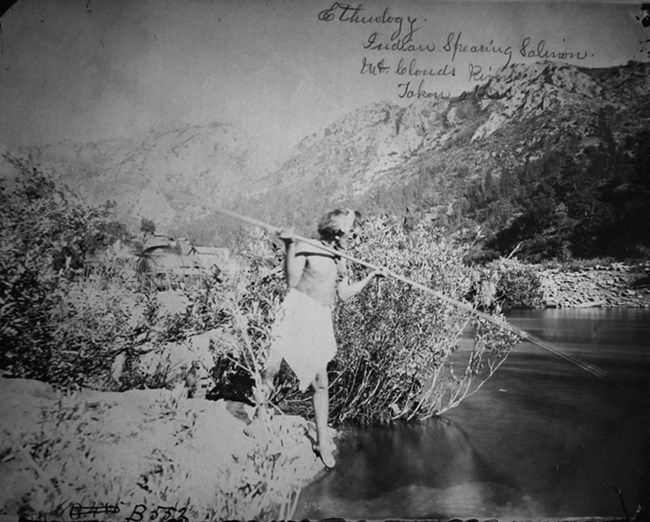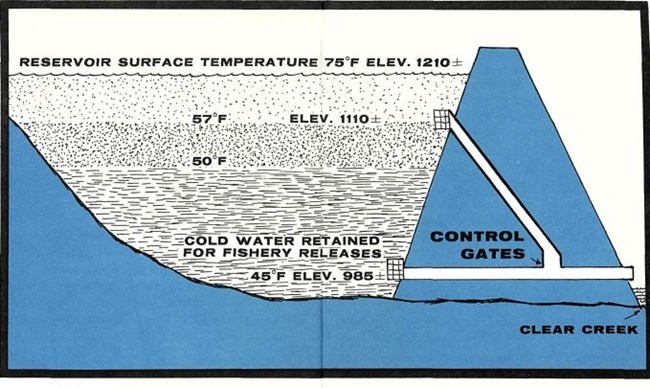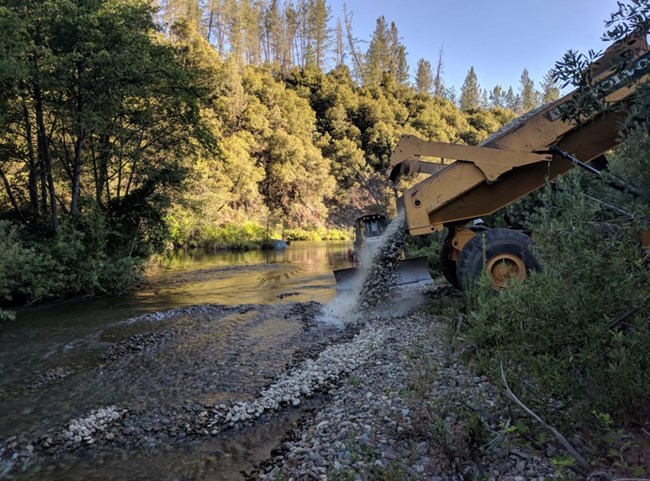

The Legacy of Salmon and the Impact of Human Activity on Clear CreekFor millennia, Northern California Native Americans, particularly the Wintu, relied heavily on salmon harvested from Clear Creek and the Sacramento River for food and trade. These waterways once thrived as major salmon habitats, sustaining the Wintu’s diet and culture. However, the mid-1800s California Gold Rush brought drastic changes. Gold miners dredged creek bottoms and mined stream banks, leading to significant sedimentation and siltation downstream. This influx of silt robbed salmon of the clean gravel essential for their reproduction, contributing to their population decline. While gold mining has waned over the years, other human activities such as logging and, most notably, dam construction have continued to impact salmon habitats. These modern influences pose significant challenges to the recovery of salmon populations. What measures have been taken, and what more can be done to support their resurgence? The Salmon Cycle of LifeSalmon migrate several hundred miles from the Pacific Ocean up the Sacramento River in order to lay their eggs in the clear gravel beds of waterways such as the Sacramento River and Clear Creek (Clear Creek is the primary stream running through Whiskeytown National Recreation Area).The eggs and larvae require cold (42°- 56° F) and clean water to survive. If conditions are right, they hatch in about 50 days. The newly hatched salmon or “yolk -sac fry” stay in the clear gravel for two to three weeks until the yolk sack is absorbed. Once they emerge from the gravel the “fry” feed along the water’s edge. The optimum water temperature for salmon fry ranges from 42° to 65° F. The urge to migrate to the ocean occurs when the fry undergo physiological changes that allow them to adapt to living in salt water. At this point, the fry slowly migrate down the Sacramento River and finally into the Pacific Ocean where they spend most of their adult lives. After several years, the adult salmon then return to their native stream to spawn a new generation. Exhausted from their long journey and reproduction efforts, they die right after spawning - but the eggs are hopefully safe, and the circle of salmon life hopefully continues. 
Dam Dilemmas & SolutionsToday, if left without any help from humans, dams and water diversions of the federally funded Central Valley Project present insurmountable obstacles for salmon to complete their life cycle. Dams block access to upstream spawning areas, change the natural demeanor of downstream water temperatures, and they also destroy aquatic habitat downstream by blocking the natural movement of life-giving gravel. Since its construction in the early 1960s, Whiskeytown Dam (officially named the Clair A. Hill Whiskeytown Dam in 1989) has provided numerous benefits to humans - including outdoor recreation on Whiskeytown Lake! But it's also important to note that the dam proved detrimental to native salmon populations and habitat.While the dam blockade itself is insurmountable, the good news is that Whiskeytown Dam was designed to transfer water into lower Clear Creek via the bottom of the lake. This bottom of the lake factor is key, as water at the bottom of Whiskeytown Lake is void of sunlight and thus substantially colder than water near the surface. Since salmon eggs and fry need cold water to survive, the water coming from the bottom of the lake makes all the difference. To further help this process of only sending cold water down into lower Clear Creek as well as the Spring Creek Tunnel below the Visitor Center, in 1993, water temperature control curtains were installed in Whiskeytown Lake by the Bureau of Reclamation. The curtains are made of reinforced rubber sheets that form a continuous barrier under the water. The Oak Bottom water curtain is 600 feet in length and reaches a depth of 40 feet. It serves as a barrier to prevent warm water from mixing with cold water coming from the Carr Powerhouse and upper Clear Creek. The water curtain below the Visitor Center is 2,400 feet in length and reaches a depth of 100 feet. This curtain extends out into the lake in a U-shape to aid cold water movement into the Spring Creek Tunnel. 
Restoring Salmon Habitat on Lower Clear CreekIn 1992, the Central Valley Project Improvement Act was passed into law by Congress and U.S. President George H.W. Bush. Among other things, the act called for restoring salmon habitat on lower Clear Creek, the part of the stream running from the base of Whiskeytown Dam to the Sacramento River. The act also specified that funding for the project come from not only the federal government but also the state.This ongoing restoration effort on lower Clear Creek has involved a partnership between several U.S. Department of the Interior bureaus including the U.S. Fish & Wildlife Service, National Park Service, Bureau of Land Management, and Bureau of Reclamation. The California Department of Fish and Wildlife has also been an important partner in restoration efforts. The work of these agencies and others both within and outside the boundaries of Whiskeytown National Recreation Area has enabled salmon to make a remarkable comeback on lower Clear Creek. As major components of the restoration program, a small water diversion dam (McCormick - Saeltzer Dam) was removed on Bureau of Land Management land a few miles downstream of the park. This enabled salmon to spawn upstream of the former dam. Another key component of habitat restoration involves annual or semi-annual gravel augmentations and simulated flood events. Gravel augmentation, defined as the artificial addition of spawning-sized gravel to a stream, involves heavy equipment dumping large quantities of specially sized gravel along Clear Creek below Whiskeytown Dam. Each spring, the Bureau of Reclamation then substantially increases the flow of water into lower Clear Creek for a few days. This simulated flood event allows high water flow to push gravel downstream and create important salmon habitat. The high water flow also mimics the natural cycle of Clear Creek and attracts fish into the creek to spawn, as before the construction of Whiskeytown Dam, the stream generally ran higher in winter and early spring due to winter rains and snowmelt upstream. To further improve salmon restoration efforts, only catch and release fishing is allowed on lower Clear Creek within the national recreation area. Additionally, only barbless hooks and artificial lures are permitted on this section of water. Thanks to all of these restoration efforts, salmon populations on lower Clear Creek are holding on. This is not only cause for celebration; it's cause for continuing conservation. To learn more about salmon restoration efforts on lower Clear Creek, hike the national recreation area’s Guardian Rock Trail from Horse Camp or visit the Bureau of Land Management’s Clear Creek Gorge Overlook, located about seven minutes west of the Redding Rancheria along Clear Creek Rd. |
Last updated: January 25, 2025
